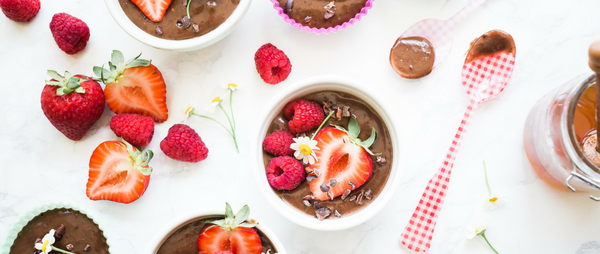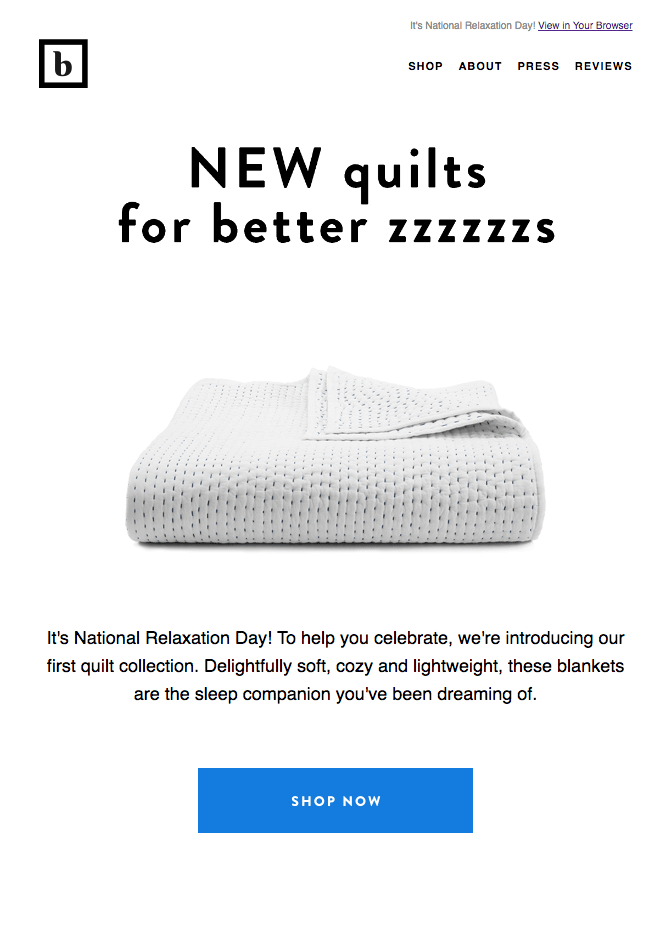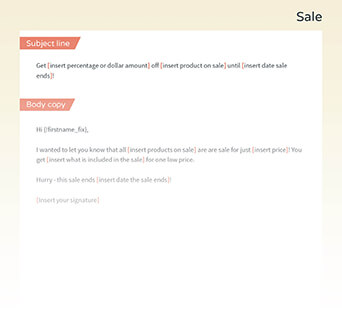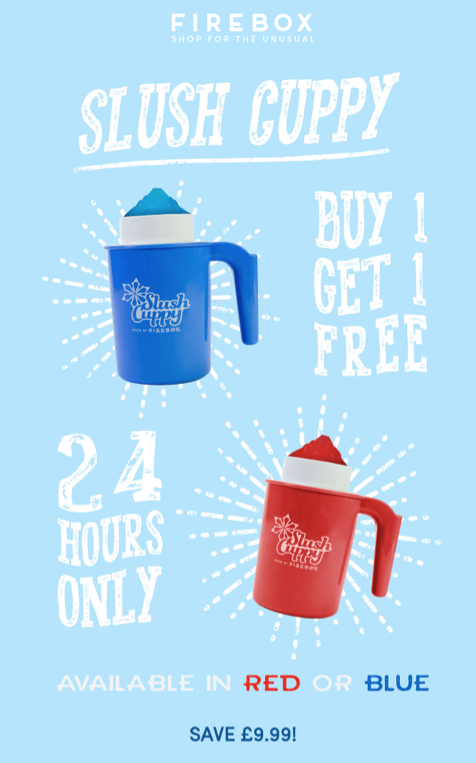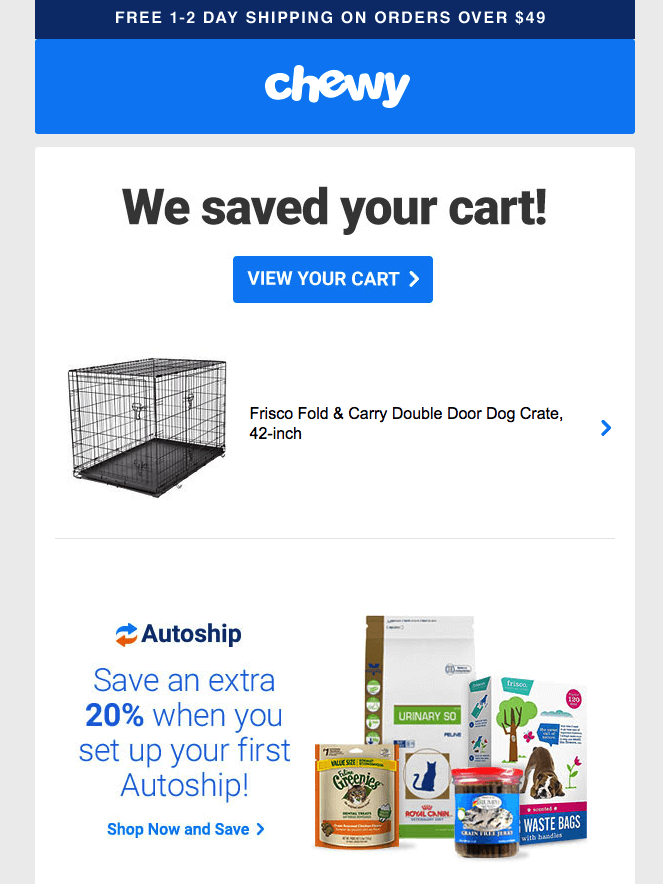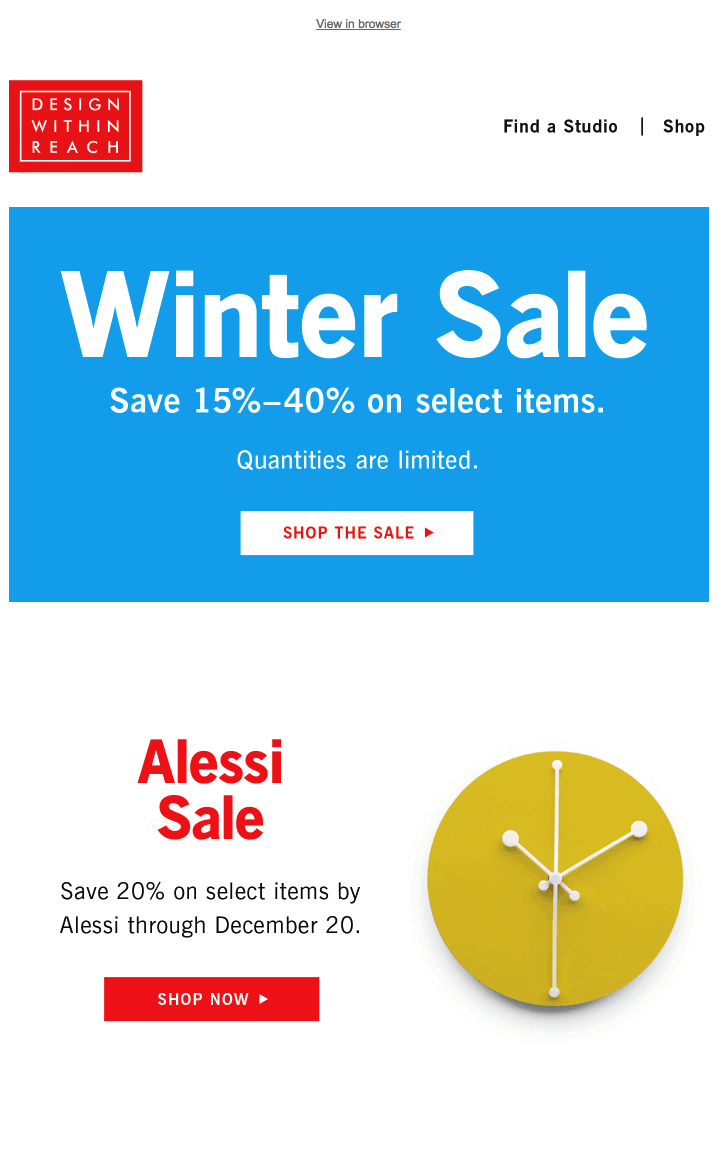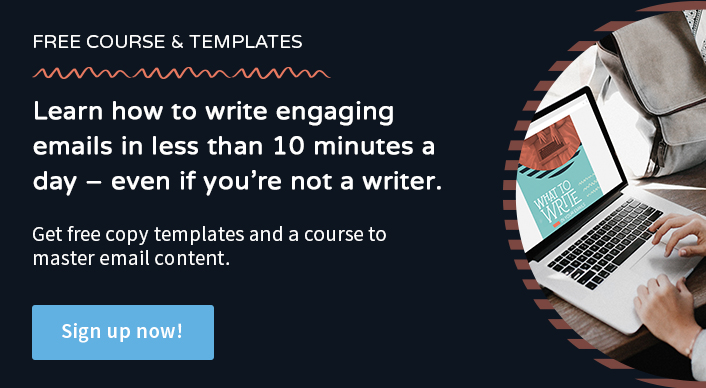Email is your strongest digital tool for sales. Really? Yes! According to the Direct Marketing Association, sixty-six percent of consumers have made a purchase after receiving an email from a brand. This outperforms sales from social media and direct mail, making email your most powerful marketing tool. This means that creating a solid email strategy is essential. Not sure how to craft an email that generates revenue and showcases your product or service? In this post, you’ll discover the key best practices to consider as you get started. So let’s whip up the perfect sales email!
Your Sales Email recipe
1. Add a touch of “influence” and “helpfulness”
In your emails, aim to show that you are helpful and a leader in your field. At the same time, you want to encourage subscribers to make a purchase. So how do you find this ideal balance? Influence comes from understanding and providing what others need or want. Instead of just talking about your product, help readers see what they require and how your business can meet that need. Keep your content personal and focus on solving the issues of each individual you contact. Write like a person and a friend, not a robotic marketer. Even though it’s an email, your content should feel like it was written by a person who’s talking to other people. Your tone and voice matter a lot here. Use friendly greetings like, “Hi there!”, “Good morning!”, or “I have great news, {!firstname_fix}.”
2. Don’t add too much “salesy” language
As you approach your sales email, try not to think of it as selling. When you provide products or services to people who want and need them, you’re doing more than getting them to purchase. You’re solving a problem they have. You are equipping customers with amazing tools or essential services. So emphasize that! That’s right – when it comes to creating a sales email that actually influences subscribers to purchase, you don’t need a sales pitch. Just focus on the value your product or service brings to people! I love this promotional email below from Brooklinen:
When I first saw it, I thought, “Ooh, I want better zzzzs!” and didn’t feel overwhelmed by a sales pitch. Focus the content in your emails around the solution, not the product features alone. Use phrases like “to improve your…” and “to help you do…” The goal is for the reader to walk away happy that they read your email and invest in your product or service!
3. Spice up your headlines
While you’re focusing on being kind and helpful, don’t sell yourself short. You’ve got awesome things to offer… so make sure that’s clear throughout your content, especially headlines. As one of the first pieces of content subscribers will see in your emails, you want to convey the value immediately. If you’re offering a coupon or promotion, some effective headlines and subject lines include:
- “Scroll to the bottom for a special deal”
- “We promise, this is worth the scroll”
- “Good news for your wallet”
- “Our way of saying Thank you!”
- “Just for you”
If you’re including testimonials from actual customers, here are a couple of headlines to include as well:
- “Don’t just take it from us”
- “Here’s what people are saying about [insert product name]”
4. Mix together the right words
As you write the best sales email ever, be sure to use appealing words that don’t scare readers off. Avoid marketing jargon and acronyms (like CRM and CTA), unless you plan on defining these terms in your message. It’s also important to consider the tone of your emails. Nobody likes to be talked down to or guilted into making a purchase. Avoid being in a position of dominance and make the consumer feel like they’re in control. To put the power in the hands of the reader, ask questions about needs and hopes, like “What do you need to grow your business?” or “How do you see your business growing?” or “Is it time for an upgrade?” By asking questions like these and using words that reference future goals, you make the reader think about what they want/need. The hope is that their needs can be fulfilled by your product or service.
5. Add a pinch of benefits
Think about what makes you buy. Is it the versatility of the product? How you can just imagine yourself using the product and it making your life better? Is it free shipping and returns? The more benefits-focused you can be, the more intrigued your reader will be. This email from Firebox is awesome. It tells me that the Slush Cuppy is buy 1, get 1 free. And that I can get it in red or blue. And my total savings! I’m sold.
Offering exclusive discounts or freebies like an ebook is a great way to capture a subscriber’s attention – but it’s the benefits that will influence them to take action.
6. Stir in some testimonials
Let your customers speak for you! Testimonials are an amazing way to give that extra push and encourage readers to buy. Sometimes people are more willing to trust information from an average consumer than a business. Your testimonials should answer “what-if’s” and squash hesitations. Think about the questions that potential customers might have. Maybe they want to know what makes your product different from other products. Or they’re wondering the main benefit you can provide them. But, to really be sure what your potential customers want to know, check your comments and past emails! The feedback and reviews that relate to these topics are perfect for your sales emails. To start sending out emails like this, we’ve created a user-generated content template. Download the What to Write in Your Emails guide and get the template on page 60!
7. Combine urgency and scarcity
Try adding a sense of urgency encourages subscribers to take advantage of offers while they still can. By doing so, it can cause subscribers to feel as though they might miss out on a great opportunity if they don’t act quickly. To create this effect in your emails, try subject lines like these:
- “Be quick! Limited Quantity Left”
- “24% off for 24 hours”
- “We don’t want you to miss this”
- “Hurry! We know you want free money”
Send this time sensitive information as broadcast emails, or one-time messages. This will ensure that your time-sensitive discounts or promo codes are hitting everyone’s inbox at the same time. While urgency is important, remember that authenticity, trust and credibility are essential too. Avoid overusing urgency as a tactic in your emails. However, when used sparsely, it can be extremely effective.
8. Get the timing just right with segmentation
You want to make your pitch when it makes logical and/or economic sense for someone to buy something from you. But, every subscriber is unique and some may take a bit more convincing than others. And that’s where segmentation comes into play. Consider segmenting based on your subscriber’s unique interests, as well as previous engagement with your emails (e.g., opened a previous email or clicked a specific link). According to the Lenskold Group, companies who send automated emails that correspond with a customer’s purchase cycle are 133% more likely to send relevant messages! Chewy does an amazing job of segmenting here, with this “saved cart” email. The email is helpful and pushes the reader to take action, without being aggressive.
There are many reasons why people don’t make a purchase. Maybe the time was off, or maybe the place. But, if you’re targeting the right audience with the right message, you’re well on your way to being successful.
9. Sprinkle in call-to-action buttons
At the end of the day, it’s important to keep in mind that this is still a sales email, and the goal is still the same: a sale! So, if your call-to-action (CTA) button is hidden or – dare I say, non-existent – take it out of hiding! Make it eye-catching and out in the open. This email from Design Within Reach makes use of multiple CTAs scattered throughout the email to catch you at various points of interest.
10. Garnish with gratitude
A sincere thank you leaves a positive impression on the reader. Including one in your emails is a nice way to show your appreciation for your customers’ business. Plus, it just feels good. Even if this subscriber doesn’t come back and sign up for a product, you’re still getting your brand in front of subscribers so that when they are ready to purchase, they’ll come to you. Certainly, that’s worth a thank you!
Ready, set, send!
Now all you have to do is pop your email in the oven for an hour. Just kidding. By incorporating these tips into your email, your sales email is ready to send! And to make it even easier, we’ve made a Sales email content template for you! Just download our What to Write in Your Emails guide to get this template and 45 more.
What’s your favorite ingredient in your sales emails? Leave us a comment!
